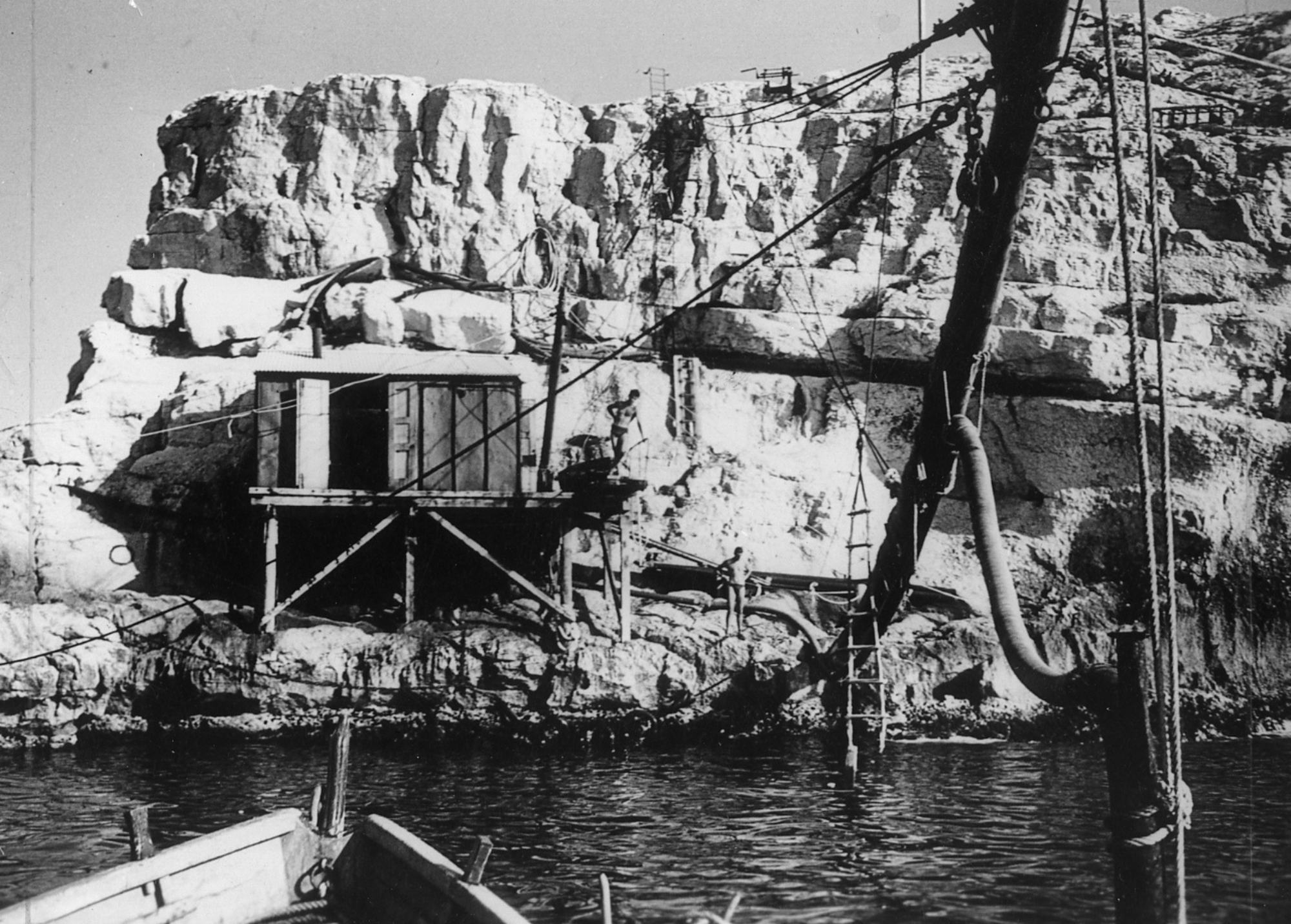
- Home
- A great scientific adventure
- Once upon a time
- The Grand Congloué Experiment
At the foot of a rocky islet off the coast of Marseilles, a new scientific discipline was laying its foundations.
For the very first time…
Local diver Gaston Cristianini reported in 1948 that he had found a wreck near the island of Riou, southeast of Marseilles. Little did he suspect that the site he had discovered would be the theatre of the first underwater archaeological excavation in the world.
The excavations, initiated by Jacques-Yves Cousteau and placed under the direction of Fernand Benoit, would also be the first to suffer the death of a diver. In November 1952 Jean-Pierre Servanti fell victim to narcosis and, despite the immediate intervention of Albert Falco, he never regained consciousness.
To get the results they wanted, the archaeologists had to be creative. For example, archaeological dredge pumps (sort of underwater vacuum cleaners) were first invented during the Grand Congloué excavations and are still in use today.
Not one wreck but two
The archaeological deposit off the islet of Grand Congloue turned out to be a cargo of amphorae and ceramics. Cousteau’s team thought they were raising the artefacts from the deck and, underneath, the hold of a single ship. But terrestrial archaeologists dated the remains to two distinct periods, and thus a mystery was born which would give rise to a vehement debate within the scientific community…
In 1966 André Malraux, then minister for Culture, took the decision to set up DRASSM with the aim of professionalizing shipwreck studies. Indeed, it was a DRASSM team which would prove in 1980 that there were actually two ships lying at the foot of Grand Congloué, the second having foundered and settled exactly on the same spot a century after the first. Fernand Benoit, the scientific director running the first excavation, thought this might have been the case but said nothing, probably for want of evidence. Nevertheless the debate was finally put to bed.
"Our leading diver on Grand Congloué was Frédéric Dumas. We were doing two or three forty-metre dives every day. It was quite something! I was a little disappointed when I first saw that mound which would become so famous. But I was new to the job… That said, all they told me was “here’s your dredge for sucking up the sediment” and “handle the pottery with care”. We brought up 4,000 amphorae and 10,000 pieces of pottery. One day I managed to fill my basket with thirty-six amphorae in a single dive. It only took me a quarter of an hour. It was a conveyor belt!
The big, twenty-five-metre sheerlegs we set up on the rock enabled us to lower the dredge vertically. We built a little wooden shed with a tin roof on a platform and that’s where we lived, along with the compressor which supplied us with low-pressure air because we were diving with umbilicals. Except when the Calypso was there. Then we would be diving with bottles.” Albert Falco.


